This is the third and final chapter in my Visual Introduction to Clifford Algebra, following on from Chapter 2 on Projective Geometry in Geometric Algebra. In Chapter 2 we showed how the perspective projection provides a wonderful means for projecting an infinite external world into a finite projection. But there is a fundamental flaw in this concept, it can only project in one direction, for example it cannot represent opposite ends of a room simultaneously.
Projective perspectives taken from opposite directions are incommensurable — they cannot be merged seamlessly without a sharp discontinuity where they join.
The problem can be traced back to the concept of projection onto a plane, which can only depict one half of reality in principle. Here we show the principle of projection again for a two-dimensional Euclidean space viewed from a third-dimensional vantage point.
We can see that the projection onto the image plane can only view the world in one direction, it cannot look in the opposite direction.
The solution would be to project onto a surrounding sphere, instead of a plane, so you could project in all directions. But don’t put the viewpoint at the center of the sphere. In the first place you could only ever use the lower hemisphere for projections on the Euclidean plane.
Instead, the viewpoint is located at the top pole of the sphere, and the reason for that is that it confers some extraordinary invariances to the projection, which is a conformal projection.
This is the first stage of the conformal projection in Geometric Algebra as proposed by David Hestenes.
Here is a 3-D depiction from Wikipedia of the stereographic projection of the two-dimensional Euclidean plane. The Euclidean point A projects to conformal point α = P(A) where the line PA meets the stereographic sphere. Note that a stereographic projection can be defined with the projection sphere tangent to the Euclidean origin, as shown further above, or with the center of the sphere on the Euclidean origin, as shown here, the only difference being that in the latter case the angle APO is double the angle computed as above, but both are legitimate stereographic projections.
Here is a stereographic projection of a square grid centered on the origin. The center of the grid, point (0, 0) projects to the nadir of the sphere. Points farther from that origin project higher on the sphere, and the outer perimeter of the grid projects around the top of the sphere, surrounding the polar apex that represents all points at infinity.
The stereographic projection is closely related to the inversive function shown here from the center of a chessboard on the left, with the unit circle marked in red. To the right is a magnified view within that unit circle. Note how the nearest four squares surrounding the circle are reflected in the periphery of the circle, whereas farther ranks of squares are reflected deeper toward the center of the circle.
The stereographic and inversive functions are related by a reflection symmetry across the Euclidean plane, as shown in this Wiki Page. The stereographic projection of point P’ on the number line is point P on the unit circle. Q is a point on the unit circle that is a mirror reflection of P across the number line. The inverse of P’ is the stereographic projection of Q, which is P” or Q’. Note that the stereographic projection and the inverse function are identical at points zero and one, so the inversive function is very similar to a projection of the stereographic projection down onto the Euclidean plane.
So the stereographic projection is related to the strange and extraordinary inversive function that we encountered in Chapter 1 at the origin of our number line! This is a mapping that inverts proximal and distal, i.e. nearness flipped with farness, with the most extraordinary property that all of the distinct infinities found in every distinct direction from the center, all map to a singular central point in the conformal mapping! The bizarre inversive function found at the center of our number line is a variation on the stereographic projection.
This stereographic projection exhibits some extraordinary invariances. A circle on the Euclidean plane maps to a circle in the conformal projection.
The stereographic projection of a straight line in Euclidean space projects to a circle in conformal space, a circle that passes through infinity at the pole of the projection sphere. Two lines that cross at a point in Euclidean space project to two circles in conformal space that intersect at two points, once corresponding to where they cross in Euclidean space, and again where they cross at infinity.
Circles and straight lines are the same shape in this space!
It is a regularity that becomes apparent only in the conformal projection.
The bizarre inversion of proximal with distal, turning near and far inside-out, wraps infinity in a finite package that is more manageable for a finite mind than any kind of representation out to infinity, if such a thing is even possible for a real physical representation.
The utility of this conformal mapping has already been demonstrated in Catadioptric Photography, (Geyer and Daniilidis 2001) i.e. photography using a combination of mirrors and lenses. It turns out that taking a photograph through a reflection in a parabolic mirror (upper left) is mathematically equivalent to the stereographic projection (upper right). On the lower left is a photograph taken in this manner. The dark circle at the center is a mirror image of the lens that is taking the picture. Around it is a reflection of the surrounding room looking in 360 degrees all around. The camera and the mirror appear to be attached to a pegboard with an array of regularly spaced holes, evident in the reflection in the lower left quadrant. The straight lines of holes in the pegboard map to perfect circles in the conformal projection, as traced out at the lower center. And circles are particularly easy to detect due to their concentric symmetry about a center. An inverse conformal mapping applied to the conformal image (lower right) restores the linear alignment of the holes in the pegboard.
Conformal Projection in 3-D through 4-D
The examples of conformal projection presented above involve a projection from a two-dimensional Euclidean space, for simplicity of exposition. But the conformal projection active in perception is a three-dimensional phenomenon making use of a projection through a fourth spatial dimension. It is difficult to visualize operations in a fourth dimension. However there is a peculiar feature of the conformal mapping that simplifies the visualization considerably.
In two-dimensional Euclidean space, every direction in the (x, y) plane extends outward from the origin to its own unique infinity. But in the conformal projection, all of those infinities map to the same polar point at the pole of the sphere. This works only because every one of those directions in the (x, y) plane is orthogonal to the z dimension that defines the north pole of the stereographic sphere.
To expand into three-dimensional conformal projection, a fourth dimension is required that is simultaneously orthogonal to x, y, and z. This fourth dimension is easier to visualize because of the fact that although every distinct direction in x, y, and z, has its own unique infinity in that direction, all of those infinities map to the same single central point in the conformal projection, and that point is a finite unit distance away, so the entire squashed fourth dimension is contained within a three-dimensional shell. It is a closed dimension that mimics infinity in a finite package. So we can visualize a three-dimensional conformal mapping as a finite spherical space where infinity maps to a singular point at its center.
What we have is that same bizarre mapping that we encountered in the inversive function.
Here is the conformal reflection of a cylindrical rod. If the rod grows to infinite length, its conformal reflection forms a complete ring through infinity. It is possible to track this growth all the way to infinity in the conformal mapping, that is impossible in the Euclidean mapping, you cannot depict an infinite rod on a finite page no matter how small you scale it.
This is the conformal reflection of four pillars on a square base. There is a peculiar fish-eye-lens warp in the conformal projection that seems hauntingly familiar.
When I first encountered Hestenes’ conformal mapping (Hestenes et al., 2000, Perwass & Hildenbrand 2004), I was struck by the similarity to another conformally warped world that I had been studying, the perspective warp observed in visual experience (Lehar 2003, 2003, Cartoon Epistemology). You can see this conformal warp when standing on a long straight road. The sides of the road converge to a point by perspective on the horizon ahead, and if you turn around, they converge to a point in the opposite direction too. And yet at the same time the road appears straight and parallel and undistorted throughout its length. Objects in the distance appear smaller by perspective, and yet at the same time they appear undiminished in size.
In case you have never noticed this warp of perceptual experience and may even question its reality, I conducted the “Hallway experiment” in a hallway at the Schepens Eye Research Institute. Subjects placed in the hallway were given three cardboard models, and they were asked to choose which model best matched their experience of the hallway. Not the geometry of the hallway as they “knew” it to be, but the shape of their experience of the hallway. Did it appear as a rectangular prism with right angled corners and parallel sides, as in model A? Or did it appear as a flat two-dimensional projection as depicted in model C? Or did it appear somewhere in between, like a bas-relief perspective scene with lines converging toward a vanishing point as shown in model B? Subjects responses were divided between models A and B.
Then the subjects were presented with a fourth model, D, that was identical to model B except that it was etched with a perspective distorted grid and the subjects were told that the grid represented the scale of the model. In other words, this was a scale model like any scale model except that the scale varied with depth, such that the grid panels in the distance appeared smaller by perspective but they were the same objective size as the apparently larger panels in the foreground.
When offered this alternative all of the subjects chose model D. This demonstrates a profound duality in spatial perception whereby objects in the distance appear smaller by perspective, yet at the same time they are judged not to be smaller in objective size. They are perceived to be shrunken by perspective, and at the same time they are perceived undiminished in size, because they span the same number of grid lines in the warped perspective grid.
This duality in size perception is the firmest proof that the world we see around us in experience is not the world itself, but merely an internal perceptual replica of that world in an internal representation with a peculiar conformal warp that allows it to package all of external space out to infinity in all directions into a finite spherical package whose extreme conformal warping might not even be noticed by the casual observer.

There is a compelling similarity between the conformally warped world of perceptual experience, and the conformally warped inverse world of the stereographic projection. In some ways these two warped worlds bear an eerie similarity, and yet in other ways they seem like polar opposites. The Bubble World perspective is big in the middle and shrinks to nothing in the periphery, whereas the “inversive” world of the stereographic projection is big at the periphery and shrinks to nothing at the center. Besides being also turned inside-out.
It finally dawned on me how these two worlds were related. One is the radial reflection of the other, conformally reflected across the surface of the unitary sphere. The large house in the foreground in the outer Bubble World perspective corresponds to the larger house in its inversive reflection near the surface within the unitary sphere, while the smaller houses into the distance in the Bubble World perspective correspond to the smaller houses toward the center of the inversive sphere.
And in case you were wondering what happened to the percipient of this experience, there he is, nestled in between the two worlds, the bounding surface between the internal self and the external world. In my experience I do see the surrounding world warped in the Bubble World perspective. But I see no trace in my experience of that weird inside-out conformally reflected world, although I do perceive some of the regularities that are detectable only in that inversive world. I do perceive a “circularity” in an endless row of identical houses, and how progressing toward infinity is much like running on the spot in a hamster wheel.
My Own Contribution to Geometric Algebra
The conformal mapping between the Bubble World and its inversive reflection finally made sense in my mind of the next step in the conformal mapping as proposed by David Hestenes. According to Hestenes, the conformal mapping occurs in two stages, first a conformal reflection into the unit sphere through an inversive function as described above. After that, a second outward reflection that projects the results of the symmetries detected in the inversive sphere back from the inside-out inverse world out to the right-side-in Euclidean world with an inverse of the inverse transformation.
For example a three-dimensional line in external space projects to a curved arc in conformal space, such that the radial distance of every point in that reflection from the origin is the inverse (1/r) to the radius r of the corresponding point in the line itself.
The regularity, or collinearity of the line is recognizable in the inversive reflection by the fact that the curved line is a circular arc that is part of a circle that passes through infinity at the center of the inversive space. The implications of this detected regularity are projected back out again by an inverse of the inversive function r² (every radial distance in the reflection is squared) because the square function cancels the inverse function to restore the original distance r in Euclidean space. (r² × 1/r = r).
This outward projection is not particularly useful for restoring the line itself, if the line was given in the first place.
The restoration is more useful for restoring the geometrical regularities detected in the conformal reflection, for example the fact that the given line segment is a part of an infinite line that stretches to infinity in opposite directions. That extrapolation is inverse-projected from the circle in the inverse world back out into Euclidean space, where it completes the symmetry of the line out to infinity.
Now this projection stage of the conformal mapping immediately bothered me, because points from the center of the inversive sphere would have to be projected all the way to infinity. But nothing can actually project to infinity! Infinity is fine as a mathematical abstraction, but for those of us who believe that mathematics is a physical mechanism, or analog computational projection taking place in the physical brain, the notion of projection to infinity is a physical impossibility.
The conformal distortion manifest in the Bubble World perspective suggests that the outward projection need not be a projection to actual infinity, but just to another conformal reflection bounded by a finite limit representing infinity. In this case the conformal projection chosen was the vergence measure of distance, i.e. the angle between the direction of gaze of two eyes in a binocular system that ranges from v = π for objects at zero distance to v = 0 for objects at infinity.
Actually this is none other than a one-dimensional stereographic projection from the number line to the unit circle, wrapping the infinite linear range from zero to infinity into the finite bounded angular range of 0 to π in each direction. This is also simultaneously a kind of logarithmic transformation because adding angles on the closed angular scale corresponds to multiplying the corresponding quantities on the linear scale. This also explains why Clifford multiplication of angles produces a sum of those angles, not a product of them.
In fact, bounding the outward projection to a finite scope solves a number of thorny problems, for example the impossibility of the reciprocal function, that suggests a one-to-one mapping between every number x from one to infinity, and its reciprocal 1/x in the bounded range between zero and one. The Bubble World conformal mapping transforms that to a one-to-one mapping between points in one finite conformal space to corresponding points in another. It is no longer an impossible mapping, but one that is perfectly possible in a real physical implementation.
A mathematics that pretends to encompass infinity, bears a permanent scar of profound paradox right at the point where it (supposedly) makes contact with infinity. A mathematics that acknowledges the profound impossibility of infinity, and thus places it in effigy at a distance that is less than infinite, marries with “infinity” as a spatial continuum, a structure that can in principle be implemented in a finite physical mechanism like the human brain.
And of course on our number line the same compression is performed in the negative direction too, the stereographic projection ranges from -π to π, to produce a number line that extends all the way from “infinity”, a pseudo-infinity, or end-point on the line in one direction to “infinity” in the opposite direction. This “infinity” represents infinity without actually being at an infinite distance from the origin. This pseudo-infinity is now just a regular number, and division by zero is no longer a forbidden operation, 1/0 is now equal exactly to “∞”, which is distinct from ∞ because nothing can actually go to infinity so we don’t even include it in our math.
A Perceptual Model
The peculiar inverse relationship between Euclidean and conformal spaces suggests a perceptual model in which the inverse conformal reflection of a sensory input serves to detect regularities hidden in a two-dimensional stimulus, and use those regularities to project a three-dimensional image of the objects most likely to have been the cause of that stimulus. In other words, the conformal model helps to solve the inverse optics problem that seeks to invert the projection of the eye to reconstruct a three-dimensional world consistent with the two-dimensional retinal image, as suggested with a simple example below.
A line in external space is projected to a two-dimensional retinal projection by the optics of the eye, represented by a patch on the surface of the conformal sphere. The information of three-dimensional depth is lost in the optical projection.
The retinal image is then inverse-projected into the inverse conformal sphere where it spreads throughout a planar probability field that represents all of the possible locations in depth that project to that same linear stimulus. This expresses the fundamental ambiguity in monocular vision whereby the depth value is lost in the optical projection. The inverse projection represents a simultaneous reification of every possible edge at every possible orientation that all project to that linear stimulus. From that infinite set of alternative interpretations, the visual system selects one that has the greatest simplicity, or symmetry, (Gestalt prägnanz) in the conformal reflection. For example one possible interpretation of the linear stimulus is as a straight line that stretches to infinity in opposite directions, recognized by the fact that its inverse projection in the conformal sphere defines a circle through the origin.
The result of that regularity detection process is then projected back out, not into the external visual world that was the original source of the visual stimulus, but out into a conformal representation of that external space wrapped up in a finite spherical representation whose outer surface represents infinity in all directions.
Here is a diorama that I built to demonstrate the geometry of perceptual experience.
It is noteworthy that the external Euclidean world, the conformally warped “Bubble World”, and the bizarre inverse conformal world, all project radially to the same retinal image! For example a photograph of my Bubble World Diorama taken from its focal center would be identical to a photograph of the original scene represented by the model.
The retina is a spherical surface, and thus its fundamental coordinates are visual angles, and thus visual angle is the only component of external reality that is preserved through the retinal projection. It is this most certain and unambiguous information of the retinal image that is used to connect to the inversive conformal world, and its conformal reflection across the unit sphere in the surrounding Bubble World perspective that seeks to model the external world guided by the regularities detected in its inversive reflection.
Non-Euclidean Geometries
The peculiar warp observed in the Bubble World perspective and its inversive counterpart in the conformal sphere is reminiscent of non-Euclidean geometry. Three mathematicians, Karl Friedrich Gauss, Nicolai Lobaschefsky, and Janos Bolyai, each independently wondered while studying Euclid’s “Elements” why Euclid had not bothered to prove his “Fifth Postulate” with the same rigor as he had with the rest of his postulates. Essentially the “Fifth Postulate” states that if two lines that cross a third line form internal angles that sum to less than 180 degrees, then those lines must cross somewhere.

This is equivalent to the “Parallel Postulate” that parallel lines never meet, and it is also equivalent to the rule that the internal angles of a triangle sum to 180 degrees. Each of those three mathematicians set out to prove the Fifth Postulate, and all three of them failed, because although the postulate seems self-evident, it is in fact impossible to prove.
That in turn opened the possibility for non-Euclidean geometries, i.e. that it is possible to define a whole non-linear equivalent to Euclidean geometry that works in a space with positive curvature like the Bubble World perspective.

And likewise by symmetry, one that works in a space with negative curvature, like the inversive conformal world. For example the Pythagorean theorem can be demonstrated and proven in the distorted non-Euclidean spaces above just as easily as it can in Euclidean form. Euclidean geometry is a subset of a whole family of non-Euclidean geometries through a range of curvatures both positive and negative.
Gauss was genuinely disturbed that we cannot be sure that our world is truly Euclidean, it could just as well be of a non-Euclidean geometry. The perceptual model suggests that Gauss’ fear was well founded, that our “Bubble World” perspective that we see in the world around us does indeed exhibit a non-Euclidean geometry with positive curvature, and the inversive conformal world suggested by Geometric Algebra is a mirror image of that world in a space with negative curvature. The two nonlinear geometries are connected to each other and to external reality by the Euclidean geometry that they share in common.
Properties of the Conformal Model
The concentric inside-out mirroring between a central inversive conformal sphere of negative curvature, and a surrounding conformal sphere with positive curvature, offers an extraordinarily powerful system for representing geometrical form based on a very few foundational primitives.
The outer Bubble World conformal mapping offers a finite bounded space capable of representing an infinite unbounded space that can now represent space all the way to infinity in all directions!
The inner inversive conformal sphere at the center can be viewed as a kind of “projection mechanism” capable of projecting geometrical images into the outer projective space based on symmetries reflected in the inner inversive space.
Vectors in the conformal sphere project to points in the perceptual sphere, the radial length of the vector being inversely proportional to the radial distance of the point it represents. A vector of length zero projects to “infinity” at the periphery of the perceptual space.
Two vectors presented simultaneously or successively represents two points in perceptual space.
The wedge product between two points defines the line that joins them in perceptual space. It also defines a circular arc in conformal space.
The Inner Product Null Space (IPNS) of that wedge product represents the whole line of which the line segment is a part, which completes to a full circle in the inverse conformal sphere.
This is not just a single line through the center, it can represent a range of geodesics which appear curved, but represent straight lines in that curved space.
The wedge product between three points defines the circle that joins them! Circles and straight lines are the same shape in this space.
And if one of the three points moves off to “infinity”, the wedge product defines a circle of infinite radius. A circle of infinite radius is a straight line that passes through the non-infinite points.
The wedge product between four points defines the spherical shell that passes through those four points.
And if one of those points moves off to infinity, the wedge product defines a spherical shell of infinite radius, which is a plane that passes through the three non-infinite points. Spherical shells and flat planes are the “same shape” in this space.
Here are some animations using the GAViewer (Geometric Algebra Viewer) demonstrating the principles of conformal geometry showing only the objects in external Euclidean space, although the symmetries observed in this space reflect symmetries in the inverse conformal world. (The GAViewer demonstrates Hestenes’ conformal mapping that projects back out to Euclidean space, not the conformal Bubble World space)
Here are four points, a, b, c, d, disposed about an (arbitrary) origin o. In conformal geometry points are dual spheres of zero radius. The dot product between two points is a scalar that is proportional to the square of the distance between them. The dot product therefore is a distance measure in conformal geometry.
The dual of a point is a sphere, and the dual of a sphere is a point. Points and spheres are the “same shape” in this space.
The wedge product between two points defines the point-pair, or line segment that joins them. Actually a point-pair is a one-dimensional sphere, i.e. two points that are equidistant from some center.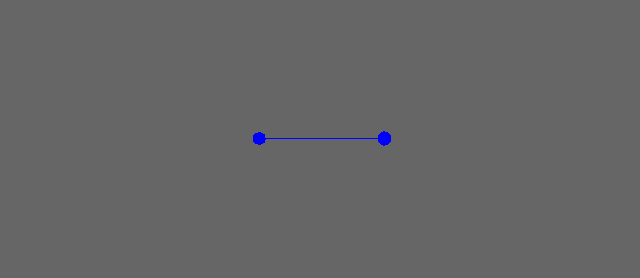
The dual of a point-pair is a circle whose radius is proportional to the separation between the two points. The dual of a circle is a point-pair.
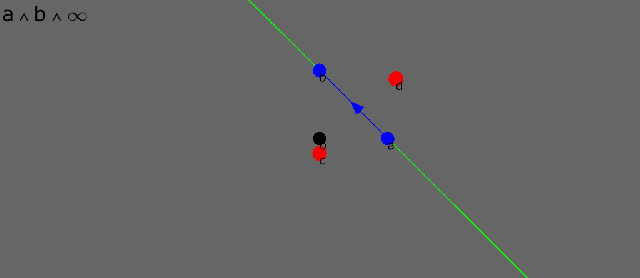
The wedge product between two points and “infinity” is the straight line containing the two points. “Infinity” is a single point that can be found in all directions.
The dual of a line is its normal plane, and the dual of a plane is its normal line.
The wedge product between three points defines the circle that joins them. This only really makes sense in the inverse conformal world where circles and straight lines are the “same shape”. It is a symmetry that shines back out to the Euclidean world.
See how the circle morphs as its defining points move. As the third point passes between the other two, the circle momentarily becomes a “circle of infinite radius”, i.e. a straight line.
The wedge product between three points and “infinity” defines the infinite plane that passes through those three points.
The wedge product between four points defines the sphere that passes through those points.
See how the sphere morphs as its defining points move. As the fourth point passes through the plane defined by the other three, the wedge product momentarily becomes an infinite plane before turning completely inside-out through “infinity”.
Closure
There are a number of curious properties of the conformal model that are a result of its circular closure.
We learned in Clifford Algebra that rotations can be expressed as double reflections. In the conformal model translation is a rotation about infinity.
Indeed all Euclidean transformations can be expressed as reflections in the conformal model! Scaling requires a reflection through a “curved mirror”, which is exactly a conformal reflection. The fact that the elements of Euclidean geometry, points, lines, planes, and spheres, are all essentially the “same shape” in conformal space, and the fact that so many Euclidean transformations can be expressed in terms of reflections is highly suggestive of a computational mechanism in the brain based fundamentally on reflections and projections between spherical elements in a conformal model.
We can now see the full implications of the principle of closure manifest at so many different levels in Geometric Algebra. Closure is not a property that makes for an accurate rendition of external reality. Closure introduces a circular warp in the representation of Euclidean space, bending straight lines into curved geodesics, and flat planes into spherical surfaces. It presents a multiplication that goes round and round instead of in and out from the origin. The purpose of closure in mathematics is the same as for the odometer, or the digital register: It provides a computational mechanism that will never “run off the edge of the page”, or roll off the end of a register, the register simply rolls back around through zero, wrapping infinity up in a finite circular reel.
There never were straight lines in the brain, the number line never extended to infinity. Like the geometry of perceptual space, the number line only approximates the linearity of the true theoretical number line, and it does so adequately only in regions relatively near the origin. It fails catastrophically at the point where it meets infinity because “infinity” falls infinitely short of true infinity at the end of the number line. Closure is what allows the mind to encompass the infinite without having to be itself infinite in extent. Closure is a practical solution to the problem of modeling an essentially infinite world in a finite bounded representation. Like the dome of the night sky, closure in mathematics is evidence of the limits and limitations of our own mind.
Conclusion
The history of Algebra has been the history of an incremental discovery of an apparently pre-existing structure. At first, the operations of mathematics were seen as convenient tricks or techniques useful for computing quantitative results. Math seemed at first to be a human invention, as individual mathematicians were credited with inventing different tricks or techniques that simplified calculations. But as more of mathematics has been revealed, the more it has become clear that mathematics is a pre-existing structure with an inherent logic of its own, and new additions to math are not arbitrary inventions, they are incremental discoveries of the hidden logic underlying mathematics. Negative numbers and the square root of minus one, it seems, were there all along waiting to be discovered, implicit in the structure of the number line and the algebraic operations on it. But if mathematics is a pre-existing structure, what is that structure, and where is it located? The time has come to finally reject the romantic notion of mathematics as an objective external entity with independent existence in an orthogonal dimension inaccessible to scientific scrutiny. The time has come to recognize mathematics for what it truly is, an artifact of the way our brain makes sense of spatial reality. Mathematics has physical existence and embodiment in the human brain. But where in the fleshy blobby grey matter of the brain would you begin to look for geometric structures like the number line? And the crystalline perfection of points and lines and planes? The brain just seems like the wrong kind of organ to express that kind of crystalline perfection.
Mathematics is not the only artifact of the computational principles of the human mind. Many have observed the intimate relationship between mathematics and music, with its geometric harmonies and periodic rhythms, and its cyclic patterns of melody, reminiscent of the rotation of a Clifford Algebra spinor.
The periodic ticks of a metronome mark out periodic intervals of time as regular as the number line. Could it be that music is yet another manifestation of the mechanism of mind? That would at least resolve the long-standing mystery of the origins and evolutionary purpose of music. And if music reveals the mechanism of mind, it also reveals mind to be composed fundamentally of oscillations. It is no accident that Clifford Algebra provides such an elegant model of cyclic oscillations, such as the spin of elemental particles. That is because Clifford Algebra is patterned on the oscillations in the human brain.
Yet another manifestation of the principles of perception is seen in ornamental art as seen churches, cathedrals, mosques, and palaces all around the world. Ornament is visual music, with its many symmetries and periodicities and crystalline perfection. If visual ornament is indeed an artifact of the computational principles of the mind, then visual ornament reveals a mechanism based on symmetries and periodicities, which are also properties of standing waves, as seen in Chladni figures obtained by bowing a steel plate with a violin bow.
Harmonic resonance is a self-organizing principle of physical matter expressed in terms of symmetries and periodicities. The complexity of the pattern that emerge far exceeds the complexity of the mechanism that produces them, which is just a homogeneous steel plate.
Below are a sample of the possible Chladni figures on a square plate and a circular plate. The circular patterns can emerge at any orientation.
Chladni figures demonstrate the basic computational principle of the brain, a principle that requires no complex mechanism besides spontaneous emergence of standing waves, a principle that is consistent with the crystalline perfection of the number line, and the concepts of points and lines and planes. And if that is not yet evidence enough for harmonic resonance in the brain, Heinrich Klüver administered LSD to volunteers who then lay in a dark room and reported their visual hallucinations. The subjects reported patterns described as grating, lattice, fretwork, filigree honeycomb, chessboard, cobweb, funnel, tunnel, cone, and spiral, that spontaneously appeared.
The patterns were exceedingly rich and complex, but each pattern appeared only for a fleeting moment before morphing endlessly into other patterns. Geometrical patterns are the primitives of visual perception.
The significance of all this symmetry to the principles of perception is revealed by psychedelic art, for example this spectacular piece called Inner Sanctum by Luke Brown inspired by the Salvia experience. If the human mind spontaneously hallucinates images so rich with symmetries and periodicities, that also suggests a harmonic resonance mechanism capable of generating hundreds of such hallucinated scenes per second.
Indeed the fact that we can instantly recognize the symmetry of a kaleidescopic pattern, is itself evidence for a symmetry-based recognition system, one that must operate in parallel to solve this intractable visual problem so rapidly.
The hyperbolic geometry of the conformal mapping is in evidence in Escher’s woodcut Circle Limit IV.
If we accept the overwhelming evidence that mathematics, music, and ornamental art are all artifacts of the computational mechanism of the brain, then we can begin to study the brain based on the properties of those artifacts. Clifford Algebra in particular suggests the operational principles of the elements of perception, or how the brain constructs geometric objects out of the basic primitives of scalars, vectors, and multivectors of higher dimension. Clifford Algebra reveals that the computational operations of the brain are explicitly spatial in nature, and that spatial nature is essential to their computational function.
The concept of duality is highly suggestive of the relationship between a standing wave oscillation as on a Chladni plate, and the nodes of that wave which are the regions where there is no oscillation. The pattern of nodes determines the shape of the vibration just as well as the vibrations themselves. For example the duality between a sphere and its central point is suggestive of a spherical standing wave oscillating between the spherical surface and its central point of symmetry.
The conformal mapping of Geometric Algebra offers a clear hint as to how a finite but explicitly spatial model can encode an essentially infinite space in a manner that seems invisible to the percipient. We have the illusion of being in a practically infinite space when outdoors, although our experience is bounded by the dome of the sky. Anything farther than that horizon is usually insignificant to our experience.
The fact that a conformal projection is itself a form of reflection, and that reflection is a most fundamental operation in Geometric Algebra suggests that the computational mechanism of the brain is built up out of simple basic elements, as are Clifford Algebra and Geometric Algebra.
The principles of phase conjugation and nonlinear optics demonstrate how a wave based system can perform computations. Whereas linear waves pass through each other transparently as if the other wave were not there, nonlinear waves warp the medium sufficient to deflect other waves, and this provides an essential control mechanism whereby one wave can modulate another, in a manner that is suggestive of a bivector formed by the wedge product between two waves, and that bivector in turn can act to deflect a third wave by Clifford multiplication. I have proposed a model of perception based on the principles of phase conjugation (Lehar).
The many phasic reversals of Clifford multiplication, and the fact that angles are represented by their projections onto the basis coordinates is suggestive of a phasic cyclic system like the Clifford Vectors Analog Electronics Analogy. I propose that the next step in investigating the computational principles of the brain would be to devise a phasic cyclic analog oscillatory model of Clifford multiplication as an image projection mechanism, capable of generating synthetic images.
The discovery of Clifford Algebra, and its subsequent elaboration into Geometric Algebra marks a profound turning point in the history of mathematics where we can finally realize what it is that we have been studying all along. When Hamilton invented his Quaternions, and Descartes plotted numbers graphically, when Gibbs invented vectors and their dot and cross products, when Herrmann Grassman invented the wedge product, unbeknownst even to themselves, these mathematical pioneers were unwittingly studying the principles of operation of the human mind implemented in the brain. Now that we know what it is we are studying in mathematics, we can begin to reverse-engineer the operational principles of our own brain under the guidance of Clifford and Geometric Algebra.


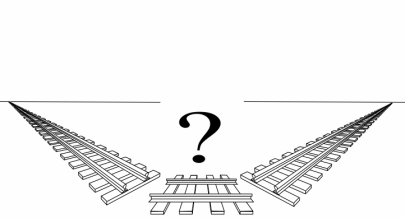




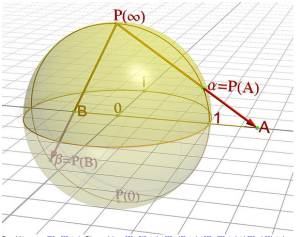





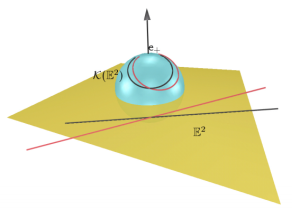


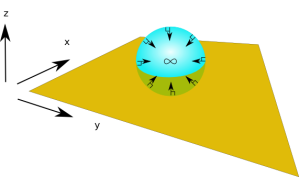






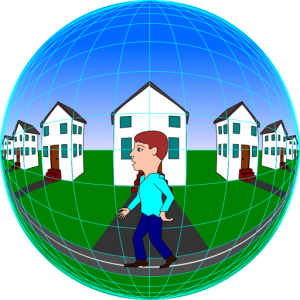
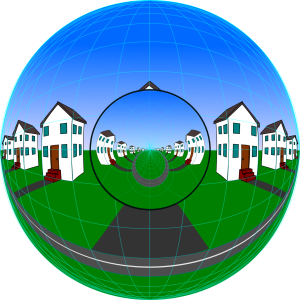



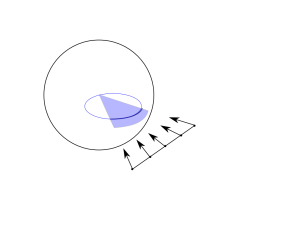



















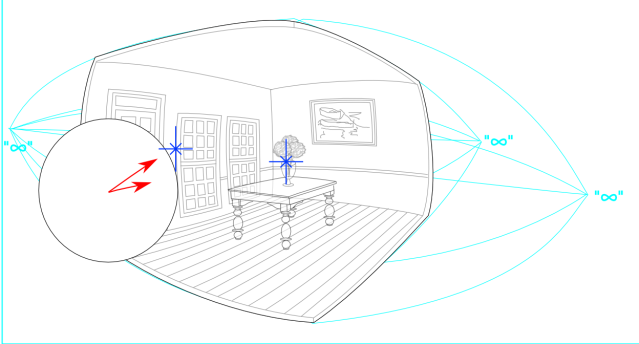



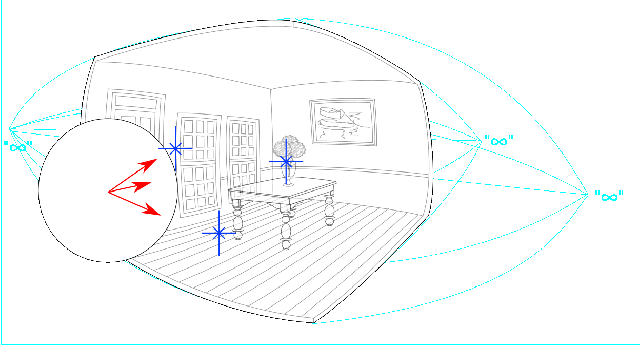





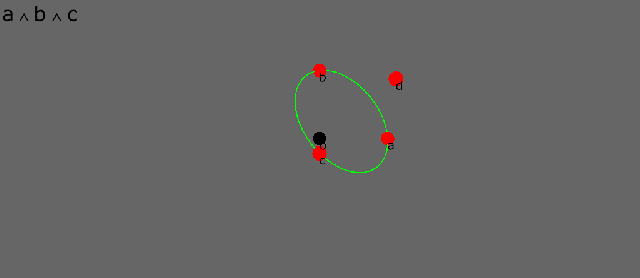
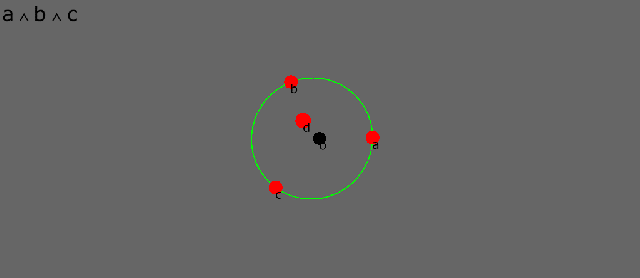






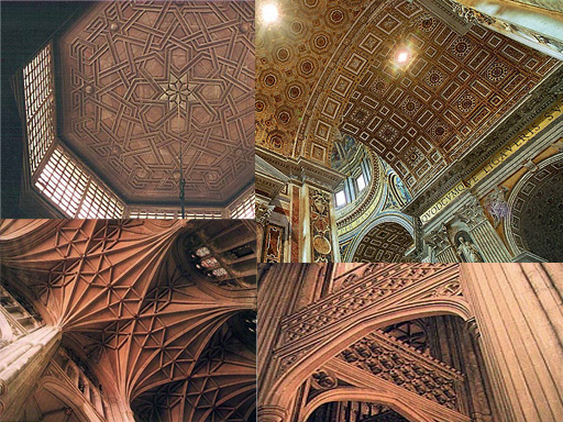






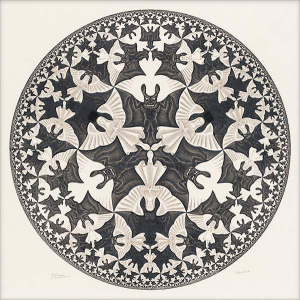








Pingback: Clifford Algebra: A visual introduction | slehar
Pingback: Geometric Algebra: Projective Geometry | slehar
These posts are quite impressive, and interesting. Thank you for taking the time.
Interesting developpement.
Your bubble world look a lot more friendly an naturel to me than the hyperbolic geometry…
But have tried to create a conformal geometry based on this model expressed in term of geometric Algebra ?
Thanks for some other great post. The place else may just anyone get that kind of info
in such a perfect means of writing? I’ve a presentation next week,
and I’m on the look for such info.
Quality content is the secret to interest the viewers
to visit the web page, that’s what this website
is providing.
This series of posts is exceptional in expanding the understanding of perception and the mind. I instantly recognized the bubble world and the Conformal sphere from a few high-dose psychedelic experiences I’ve had.
Thank you.
I have been thinking about why the moon seems greater when its closer to the horizon.
My hypothesis is that we have a mental coordinate system similar to that of a globe.
On the globe longitude angular separations are greater near equator and smaler near the poles.
The moons diameter is in fact constant 0.5 degree, put persieved greater near the horison and smaller near zenit. Maybe this could be explained even better with your ideas of our visual perception.
Thanks for posting this. I wonder how your theory relates to non-orientable surfaces such as Klein Bottle configurations that visual brain network topologies seem to show?
Have you ever considered what we interpret as a Number is actually composed of fundimental numbers(imaginary) as a Dual Quaterion.In math 1 is an Spherical event horizon(mirror) to its own inverse.As you shown +1 0 -1 is actually inner space.A number is a duality in Eternal “ER-ER” Bridge.A number itself can now be treated as a sphere in CGA.
Or like a 3-D (or more!) vector with freedom of motion on the surface of the (N-) sphere
Hi Slehar
I think I dont know you or why you suddently write to me. Ok i am interested in geometric algebra, and your presentation of the subject looks pretty and interresting.
So what do you want from me ?
Mvh John
> Den 29. okt. 2021 kl. 19.35 skrev slehar : > > >
I am co-producing (with Maija Beeton) a meeting for the Los Angeles chapter of ACM SIGGRAPH. The meeting is called “To the Fourth Dimensions and Beyond!” In this meeting we will explore game design in higher dimensions for LA SIGGRAPH’S audience of technology, and artistic practitioners. The meeting will take place on zoom. We are exploring ways to have a VR component. We believe that VR is an invention on a par with the invention of linear perspective.
If you can participate, we will port any 3D objects or animations to VR via the Unity. The meeting will be held on January 11, 2022 at 7pm PST.
We would appreciate a response by Monday, November 22 to mike@stereosphere.com .Any questions?
Thanks for a wonderfully informative blog post!
Michael Fleming